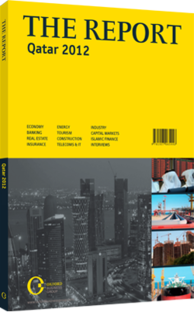Waste not, want not: The government is looking to bolster sewage treatment capacity and make water usage more efficient
Given the forecasts for strong economic and demographic growth in Qatar over the coming decade, and the concomitant demand for water, the government has been turning its attention to its wastewater treatment strategy. Doha is aiming to bolster capacity for sewage treatment and improve efficiency of water use by increasing the role of treated sewage effluent (TSE) for non-potable water purposes. “Qatar is now investing significantly in an integrated approach toward sustainability – the first time such an strategy has been adopted in the Middle East,” said Geoffrey Piggott, the managing director of environmental waste and water technology firm Keppel Seghers.
NEW PLANS: In June 2012 it was announced that MWH Global and Scottish Water, as its sub-contractor, have been hired by the Public Works Authority of Qatar (Ashghal) to upgrade Qatar’s wastewater infrastructure. The contract covers all elements from wastewater collection to water treatment and distribution. This comes after MWH was hired to work on a national wastewater master plan, comprising $2.7bn of projects over the next seven years. Alongside this, CH2M HILL was hired in December 2011 to work on the $2.7bn-3.3bn Inner Doha Re-sewerage Integrated System, which will include a treatment plant, pumping stations, a deep-trunk sewer tunnel, and ocean outfall and sewage forwarding by 2019.
CH2M Hill was awarded the $62m contract for the work, which is in the planning phase. Details on the capacity of the plant, the level of treatment and use of the treated water, as well as any private investment in the project, are yet to be confirmed. Such projects will go a long way to bolstering the peninsula’s wastewater network, with treated wastewater contributing 50m cu metres a year to Qatar’s water supply in 2011, according to Commercial Bank Capital. This is expected to increase to 65m cu metres by 2015.
The UAE’s Metito will also contribute to this expansion, with the expectation that it will deliver three new sewage contracts for Ashghal at a cost of $41m by the end of 2012. These include the $27m second phase, 12,000-cu-metre expansion of an industrial sewage treatment plant, construction of the $11m closed-loop sewage tanker reception facility at the Doha West plant and the $2.7m development of three mobile sludge dewatering units. However, perhaps Metito’s most important work is aimed at Ashghal’s target of improving the quality of treatment in a bid to expand the use of TSE, with Qatar looking at a number of ways to improve water use efficiency and place less pressure on depleting groundwater reserves.
DESALINATION: The government’s main strategy to deal with the scarcity of water has been a focus on desalination. For example, the Qatar National Food Security Programme is looking at ways of reducing the cost and energy intensity of desalination for food production. According to Patrick Linke, the managing director and co-founder of Qatar Sustainable Water and Energy Utilisation Initiative, “The main problem for domestic production of food is availability of water.
The current practice is using groundwater but that is depleting fast. So using desalinated water is the key.”
While research should focus on reducing the price of desalination, the government is also looking at the use of TSE for non-potable purposes. Qatar uses 193m cu metres of TSE a year, with 60m cu metres being used for the irrigation of parks, gardens and cattle feed farms. The Ministry of Environment is looking to bolster the use of treated water for agriculture and has allocated 833 sq km for irrigation using treated sewage water in Dukhan Sabkha.
Such schemes are only likely to increase in the future, with Ashghal commissioning Metito to build a reverse-osmosis pilot plant at the Doha West Sewage Treatment Works using an enhanced treatment process based on new technology. If the plant is successful, it would expand the reuse applications for TSE and bolster the country’s water supplies. Such foreign investment is therefore likely to be crucial in the coming years for improving Qatar’s water capacity.
You have reached the limit of premium articles you can view for free.
Choose from the options below to purchase print or digital editions of our Reports. You can also purchase a website subscription giving you unlimited access to all of our Reports online for 12 months.
If you have already purchased this Report or have a website subscription, please login to continue.

